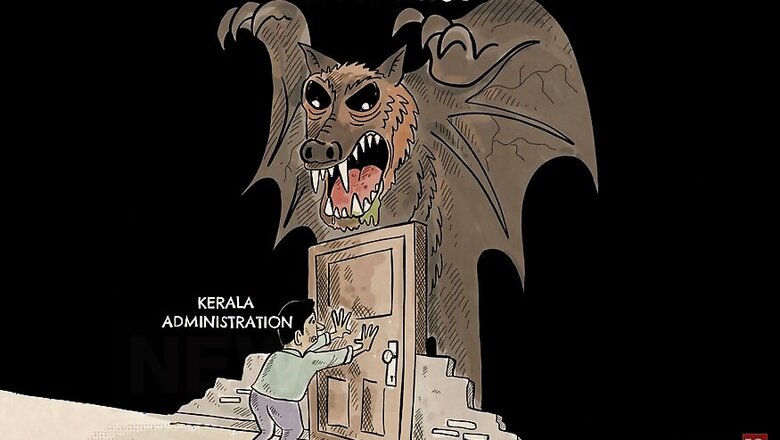
views
New Delhi: Days after it came to light that the initial deaths in Nipah virus cases were due to bats found in a well, doctors on ground in Kerala said that it is yet to be determined if the mammals were the main source. A doctor suggested that a research should be conducted to look into possibilities of re-emergence of the virus from the first outbreak two decades ago.
According to Dr Ajit Bhaskar, a pulmonologist from Kozhikode, the veterinary team conducting tests on ground in Kerala have informed that the bats found in the well were not fruit bats, which cause the spread of Nipah virus.
The team, with members from the National Centre for Disease Control (NCDC), had sent the bat to be tested at National Institute of Virology (NiV), Pune
The visiting national health officials had tied the initial deaths to "many bats" in a well in Kerala from which the victims drew water, the Kerala government said.
Four days have passed since the central health ministry rushed a team to Kerala to contain the outbreak of the rare virus, which has killed 12 people so far and has 13 confirmed cases in the state.
Bhaskar also dismissed that the bat droppings (a rumour which spread in Kottayam) could have led to a more widespread virus.
“Certain books mention that the virus can stay dormant in a person for 11 years,” he said. This is the new theory doctors are mulling over after India’s first outbreak in Siliguri, in 2001.
The virus could stayed dormant in some of the infected areas, and has now re-emerged, Bhaskar suggested.
The outbreak, he repeated is certainly localised. The ministry is also putting out daily statements regarding it and has said that the outbreak is under control and there is no need to panic.
The outbreak was in Perambra, the patients infected in Malappuram had visited the hospital where the first set of patients were admitted, and the medical staff getting ill had been in close contact with them all.
Though, on Wednesday, two more cases were rumoured to have been found in Mangalore, Karnataka, the virology laboratory in Manipal University did not identify them as Nipah to the Indian Council of Medical Research (ICMR), which is also monitoring the situation on ground.
The virus, is most likely spreading from close contact, and is not airborne, said Bhaskar.
“The way to contain it was to limit movement as much as possible. People must remain in their houses as much as they can and only go to a hospital when it is absolutely necessary. Hospitals being places where others are getting infected,” the doctor claimed.
“We’ll know in about two weeks how much it has spread,” he said. That is the virus’s incubation period, thus, anyone getting infected now will show symptoms by then.
“Containment measures are in place,” said Dr. R Gangakhedkar, head of communicable disease at the ICMR. “Patients are isolated, their close contacts are under watch and the medical staff has been given protective gear.” The well in Perambra has been sealed, he told News18.
He echoed Bhaskar in describing how localised the spread was, as all cases till date, were related to the first family that got infected. There were no new cases from the community, he said, unconnected to anyone who had been on contact with the already infected.
Union Minister of State for Health Ashwini Choubey on Thursday said the outbreak of Nipah virus in Kerala is a "localised" occurrence and people need not panic, amid reports of dead bats being found on the premises of a government school in Himachal Pradesh.


















Comments
0 comment